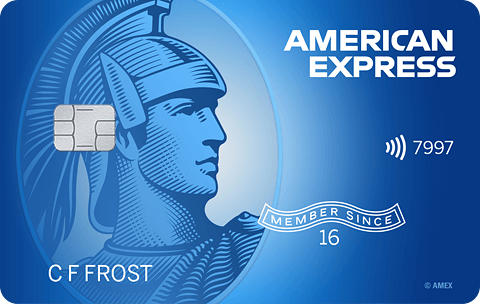Like some of the brand’s trendy outfits, the Forever 21 Credit Card comes in more than one variety. One version can be used with the retailer only, and the other can be used wherever Visa is accepted. Both versions pack rewards and perks that could enhance your wardrobe, but only if you stay on top of expiration dates.
Neither version beats the flexibility of a general rewards credit card, which won’t limit you to shopping or earning rewards with just one retailer, and will have a longer window to make the most of those rewards. Still, the Forever 21 Credit Card can offer free shipping, plus birthday and anniversary incentives, so weigh the value of these benefits to determine whether it’s a good fit.
Here’s what you need to know about the Forever 21 Credit Card.
1. It features decent introductory offers
Compared with some other store credit cards, the Forever 21 Credit Card has fairly generous offers for new cardholders. You can get 20% off your first purchase when the card is used on the same day you open the account. There’s also an opportunity for 15% off when you receive the Forever 21 Credit Card.
These discounts can add up to significant savings, but depending on the amount spent, you can likely do better. The Wells Fargo Active Cash® Card, for example, can allow more time and flexibility to earn its sign-up offer: Earn a $200 cash rewards bonus after spending $500 in purchases in the first 3 months. While you won’t get the bonus immediately, this card offers more time to budget, and you can earn by paying for everyday expenses. On top of that, you’ll also get a 0% intro APR on Purchases for 15 months and 0% intro APR on Balance Transfers 15 months from account opening on qualifying balance transfers, and then the ongoing APR of 20.24%, 25.24%, or 29.99% Variable APR.
2. But ongoing rewards have a limited shelf life
Rewards vary depending on the version of the card. With either version, you’ll earn 3 points per $1 spent with the retailer in stores or online. The Visa card also earns 2 points per $1 spent on qualifying restaurant purchases and 1 point per $1 spent on all other purchases.
For every 300 points earned, you’ll automatically get a $5 rewards certificate to be used at Forever 21. That means points are worth a better-than-average 1.6 cents each. The problem, though, is that you can’t bank rewards, and those certificates expire 60 days from the date issued. (Points expire 24 months after posting.) So you may end up having to use reward certificates regardless of whether you actually need a new outfit or accessories.

The certificate is printed on your monthly statement or sent via email with a barcode, according to Lindsey LeBerth, senior manager of corporate affairs at Bread Financial, the bank that issues the Forever 21 Credit Card. Your Forever 21 account will also grant access to your rewards.
For online shoppers, for instance, the $0-annual-fee Blue Cash Everyday® Card from American Express earns 3% back on U.S. online retail purchases, on up to $6,000 per year, then 1%, and rewards in everyday categories. And as long as the card is active, your rewards don’t expire. Terms apply; see rates and fees.
🤓Nerdy Tip
In-store shoppers who frequent a Forever 21 located inside a Simon Mall might want to consider the $0-annual-fee Simon credit card, which offers cash back on in-person transactions within Simon’s nearly 200 U.S. properties.
3. You’ll have access to some perks
As a Forever 21 cardholder, you’ll get access to some snazzy ongoing perks. On your card anniversary and the retailer’s birthday in April, you’ll get 21% off. On your own birthday, you get a $10 discount on a purchase of a minimum of $25. Terms apply.
You’ll also get access to free standard shipping, events and exclusive offers. General-purpose rewards credit cards don’t typically provide these kinds of store incentives — although, again, they tend to offer richer and more flexible rewards.
4. The high APR is unfashionable
As of this writing, the Forever 21 Credit Card was charging a sky-high interest rate north of 33%. For comparison, the national average rate on credit cards that assessed interest as of August 2023 was significantly lower at 22.77%, according to Federal Reserve data.
It’s not uncommon for store credit cards to have high interest rates, but just know that if you tend to carry a balance month to month, this card will get expensive quickly.
A credit card at a credit union will save you more money, but it may take some minor effort to join and become a member. The $0-annual-fee PenFed Power Cash Rewards Visa Signature® Card, for example, earns 1.5% cash back on all purchases, and it has a 0% introductory APR for 12 months on balance transfers made in the first 90 days after account opening. After that, the APR for the unpaid balance and any new balance transfers will be a non-variable rate of 17.99%. But regardless of what credit card you have, do what you can to pay it off in full each month so you never have to worry about the APR.
5. Promotional offers may occasionally be available
The Forever 21 Credit Card’s terms and conditions state that the issuer occasionally offers special financing terms such as deferred interest, waived interest, a low APR or equal payment options.
It’s important to always read the terms and conditions to understand what’s being offered. For instance, deferred interest promotions are typically advertised as “no interest if paid in full by” a certain amount of time. This means that interest continues to accrue in the background during the promotional window, and if the entire balance isn’t paid by the time the promotion expires, you’re on the hook for interest charges dating back to the original purchase. With this card’s high interest rate, it could derail your budget or lead to debt if you’re not prepared to cover that cost.
For a true 0% introductory promotion — which, when it ends, will charge you interest only on your remaining balance at that time — consider the introductory offers listed above for the Wells Fargo Active Cash® Card or Blue Cash Everyday® Card from American Express.





















Discussion about this post